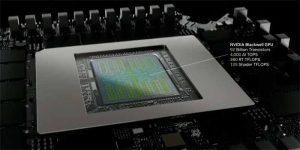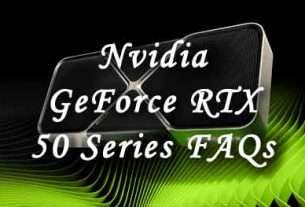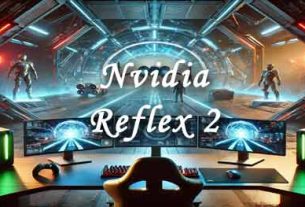NVIDIA’s Blackwell architecture and associated technologies are transforming the gaming world, with advanced AI, graphics, and performance enhancements. Here’s a comprehensive glossary of key terms related to the NVIDIA Blackwell architecture and cutting-edge innovations in gaming and AI.
NVIDIA Blackwell Architecture
The NVIDIA Blackwell architecture is the foundation for the GeForce RTX 50 Series, offering AI-driven neural rendering and next-gen ray tracing capabilities. With its advancements, Blackwell delivers significantly improved performance and realism in gaming.
Tensor Cores
Tensor Cores are specialized processing units within NVIDIA GPUs designed to accelerate AI computations, particularly for deep learning tasks. They play a crucial role in enhancing technologies like DLSS (Deep Learning Super Sampling) and AI-driven rendering.
RT Cores
RT Cores (Ray Tracing Cores) are dedicated hardware units that accelerate real-time ray tracing calculations. These cores enable incredibly realistic lighting, reflections, and shadows in games, helping to create more immersive environments.
DLSS (Deep Learning Super Sampling)
DLSS is an AI-powered technology that upscales the resolution of a game without sacrificing image quality, thus improving performance. By using deep learning models, DLSS intelligently renders fewer pixels and then upscales them, resulting in smoother gameplay and higher frame rates.
Multi Frame Generation
Introduced in DLSS 4, Multi Frame Generation leverages AI to generate multiple frames for each rendered frame. This significantly boosts frame rates, enhancing game responsiveness and providing a smoother visual experience, especially in demanding titles.
Transformer Model Architecture
The Transformer Model Architecture is a deep learning framework renowned for processing sequential data. Used in DLSS 4, it enhances image reconstruction, improving resolution and visual quality. Its application to gaming graphics brings unprecedented realism and detail to rendered images.
NVIDIA Reflex
NVIDIA Reflex is a suite of technologies designed to reduce system latency, making games feel more responsive. It’s crucial in fast-paced multiplayer games where reaction time can make the difference between victory and defeat.
Frame Warp
Frame Warp is an innovative technique introduced in NVIDIA Reflex 2. It updates rendered frames with the most recent mouse input right before they are sent to the display. This minimizes latency, creating a smoother and more immediate gaming experience.
RTX Neural Shaders
RTX Neural Shaders integrate AI networks into programmable shaders, enabling real-time rendering of highly complex visual effects. These shaders enhance graphics fidelity by producing lifelike materials and lighting effects in games.
RTX Neural Faces
RTX Neural Faces is an AI-powered technology designed to generate high-quality, realistic digital human faces in real-time. This technology elevates character realism in games by creating faces that reflect the intricacies of human expression and detail.
NVIDIA ACE (Autonomous Character Environment)
NVIDIA ACE is a set of technologies that enables game characters to perceive, plan, and act autonomously. By using AI, these characters can react intelligently to player actions and the game world, providing a more dynamic and immersive experience.
NVIDIA NIM (NVIDIA Inferences Microservices)
NIM refers to NVIDIA Inferences Microservices, which are tools that help run AI models on PCs. NIM facilitates the development of AI agents and assistants by providing the foundational infrastructure for creating intelligent, real-time interactive systems.
Project R2X
Project R2X is an example of an AI-powered PC avatar created using NVIDIA NIM. It demonstrates the potential for creating intelligent AI assistants capable of interacting with users, understanding commands, and providing real-time responses.
FP4 Precision
FP4 Precision is a data format that enhances AI image generation performance by enabling generative AI models to run more efficiently. This results in faster processing and reduced memory usage, optimizing AI-driven applications such as image generation and rendering.
NVIDIA Broadcast
NVIDIA Broadcast is an application designed to enhance the livestreaming experience by using AI to improve audio and visual quality. Features like noise reduction and virtual lighting help streamers create a more professional presentation, ensuring a higher-quality broadcast.
Max-Q Technology
Max-Q Technology is a set of design and optimization techniques developed by NVIDIA to create thin, light, and quiet gaming laptops without compromising on performance. It ensures that high-performance laptops remain efficient, cool, and portable.
These terms represent just a portion of the groundbreaking technologies driving the future of gaming, AI, and immersive computing experiences. By incorporating AI-driven features, real-time ray tracing, and performance-boosting innovations, NVIDIA continues to push the boundaries of what’s possible in gaming and content creation.




